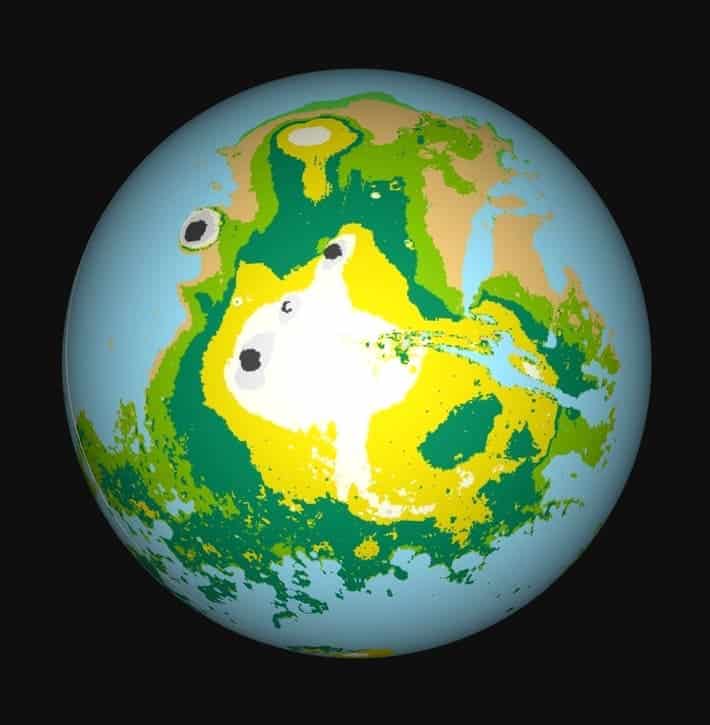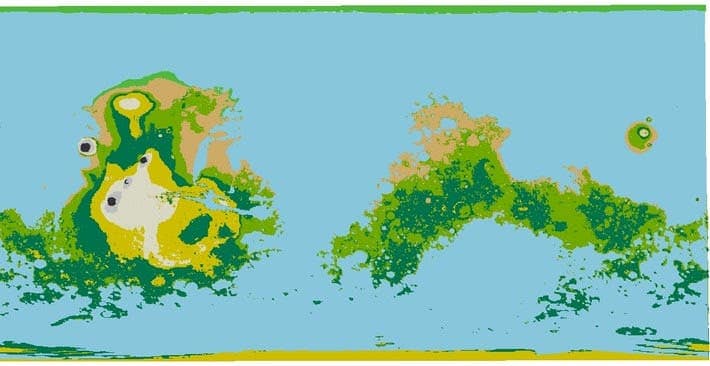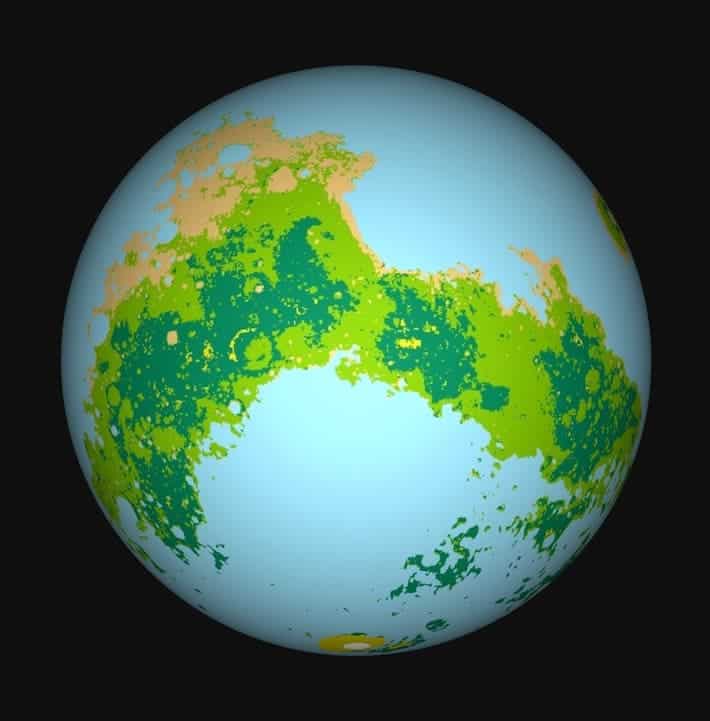
Both from afar and up close, Mars looks like a desolate world that glows in bright red due to the iron-rich dust that covers the planet. However, were it to be terraformed, Mars may very well look like blue marble, similar to Earth.
In a fantastic exercise of imagination and design, a Nepal-based civil engineer mapped out Mars as it might have looked like if 71% of its surface was covered in water.

The visualizations generated by Aaditya Raj Bhattarai are part of his bachelor thesis at Tribhuwan University in Nepal, which immediately rose to fame after he shared them on the MapPorn subreddit. They show two distinct landmasses or continents, one dominated by the 20-km-tall Olympus Mons (the largest volcano in the solar system), the other more covered in flatlands, including planes like Terra Sabaea.
“I am [a] big fan of Elon [Musk] and SpaceX and their plan to put man on Mars, and I hope I could help in his cause,” Bhattarai told Inverse. “This is a part of my side project where I calculate the volume of water required to make life on Mars sustainable and the sources required for those water volumes from comets that will come nearby Mars in [the] next 100 years.”
Bhattarai notes that on his maps, the Martian sea level is as low as 963 meters below the geoid level (an approximation of the mean sea level).
Musk had previously alluded to the idea that he would terraform Mars by nuking its poles. Although it may read like satire, he was only half-joking. Later, Musk said a continuous stream of small nuclear explosions above the poles would act like artificial suns, raising the temperature.
The increasing surface temperatures would vaporize some of the carbon dioxide trapped in the south polar cap, which would end up in the atmosphere and further cause more heating. The temperature would be enough to melt the ice and provide liquid water needed to sustain life. The added liquid water would raise the atmospheric pressure to the equivalent of that found in the highest mountaintops on Earth. Although far from being survivable, it would be enough to start growing plants and trees that thrive on CO2 and produce oxygen. In March 2017, scientists grew potatoes in Mars-like soil and conditions akin to Matt Damon in The Martian, so that’s doable already.
But even though these images might look enticing, Mars’ terraforming would be incredibly complex. It might take centuries before Mars looks anything like Earth — if such a thing would even be possible in the first place.

Even so, producing an oxygen-rich atmosphere is just the tip of the iceberg. Scientists would still have to find a way to address the myriad other problems like:
- no magnetic field to shield from radiation and sputtering of the atmosphere;
- no plate tectonics to recycle carbon and water and rebuild eroded land;
- no large moon to stabilize the axial tilt and provide tides;
- much more elliptical orbit, which means much more erratic climate;
- much higher rate of impacts due to the proximity of Jupiter and the asteroid belt;
- gravity only .38 that of Earth;
- No mountain chains to break up atmospheric currents and release precipitation;
- surface covered in toxic perchlorates and asymmetry between hemispheres means all land on one side and all ocean on the other.
Even with this out of the day, there’s still the issues that:
- it would take centuries to build enough oxygen to achieve breathable levels;
- we might fail miserably since climate is super complex;
- because it’s not geophysically active, Mars might actually take thousands of years to become habitable;
- some things will never be the same on Mars as on Earth. Take gravity, for instance, which is almost a third that on Earth. Studies carried out in weightless environments such as on the International Space Station note that the conditions cause bone demineralization, but also muscle atrophy, immune system effects, and other complications throughout the body. It’s foreseeable that similar effects may occur in partial gravity. In time, humans living and breeding on Mars would evolve radically different. They’d become much, much taller than Earthlings because of the reduced gravity.
Nevertheless, terraforming Mars might be worth pursuing. Who knows what the 22nd century might look like…









